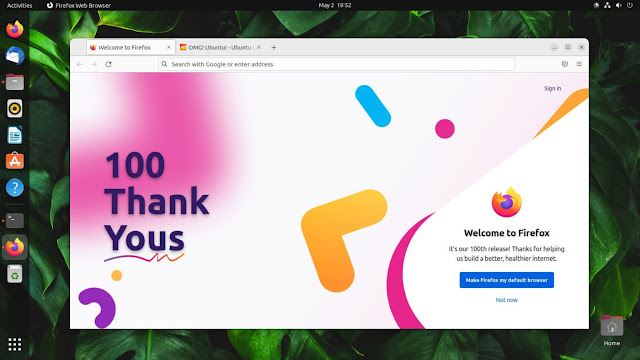How To Install Java with Apt on Ubuntu 18.04 | Linux 20.04

Introduction
Java and the JVM (Java’s virtual machine) are required for many kinds of software, including Tomcat, Jetty, Glassfish, Cassandra and Jenkins.
In this guide, you will install various versions of the Java
Runtime Environment (JRE) and the Java Developer Kit (JDK) using apt.
You’ll install OpenJDK as well as the official JDK from Oracle.
You’ll then select the version you wish to use for your projects.
When you’re finished, you’ll be able to use the JDK to develop
software or use the Java Runtime to run software.
Prerequisites
To follow this tutorial, you will need:
One Ubuntu 18.04 server set up by following the the Ubuntu 18.04 initial server setup guide tutorial, including a sudo non-root user and a firewall.
Installing the Default JRE/JDK
The easiest option for installing Java is to use the version packaged with Ubuntu. By default, Ubuntu 18.04 includes Open JDK 11, which is an open-source variant of the JRE and JDK.
To install this version, first update the package index:
sudo apt update
Next, check if Java is already installed:
java -version
If Java is not currently installed, you’ll see the following output:
OutputCommand 'java' not found, but can be installed with:sudo apt install default-jresudo apt install openjdk-11-jre-headlesssudo apt install openjdk-8-jre-headless
Execute the following command to install the default Java Runtime Environment (JRE), which will install the JRE from OpenJDK 11:
sudo apt install default-jre
The JRE will allow you to run almost all Java software.
Verify the installation with:
java -version
You’ll see output similar to the following:
Outputopenjdk version "11.0.11" 2021-04-20OpenJDK Runtime Environment (build 11.0.11+9-Ubuntu-0ubuntu2.18.04)OpenJDK 64-Bit Server VM (build 11.0.11+9-Ubuntu-0ubuntu2.18.04, mixed mode,
sharing))You may need the Java Development Kit (JDK) in addition to the JRE in order to compile and run some specific Java-based software. To install the JDK, execute the following command, which will also install the JRE:
sudo apt install default-jdk
Verify that the JDK is installed by checking the version of javac,
the Java compiler:
javac -version
You’ll see the following output:
Outputjavac 11.0.11
Next, let’s look at how to install Oracle’s official JDK and JRE.
Installing Oracle JDK 11
Oracle’s licensing agreement for Java doesn’t allow automatic
installation through package managers. To install the Oracle JDK,
which is the official version distributed by Oracle, you must create
an Oracle account and manually download the JDK to add a new package
repository for the version you’d like to use. Then you can use apt
to install it with help from a third
party installation script.
The version of Oracle’s JDK you’ll need to download must match
version of the installer script. To find out which version you need,
visit the oracle-java11-installer
page.
Locate the package for Bionic, as shown in the following figure:
In this image, the version of the script is 11.0.7.
In this case, you’ll need Oracle JDK 11.0.7. You don’t need to
download anything from this page; you’ll download the installation
script through apt shortly.
Then visit the Downloads page and locate the version that matches the one you need.
Click the JDK Download button and you’ll be
taken to a screen that shows the versions available. Click the
.tar.gz package for Linux.
You’ll be presented with a screen asking you to accept the Oracle license agreement. Select the checkbox to accept the license agreement and press the Download button. Your download will begin. You may need to log in to your Oracle account one more time before the download starts.
Once the file has downloaded, you’ll need to transfer it to your
server. On your local machine, upload the file to your server. On
macOS, Linux, or Windows using the Windows
Subsystem for Linux, use the scp
command to transfer the file to the home directory of your user. The
following command assumes you’ve saved the Oracle JDK file to your
local machine’s Downloads folder:
scp Downloads/jdk-11.0.7_linux-x64_bin.tar.gz sammy@your_server_ip:~
Once the file upload has completed, return to your server and add the third-party repository that will help you install Oracle’s Java.
Install the software-properties-common
package, which adds the add-apt-repository
command to your system:
sudo apt install software-properties-common
Next, import the signing key used to verify the software you’re about to install:
sudo apt-key adv --keyserver keyserver.ubuntu.com --recv-keys EA8CACC073C3DB2A
You’ll see this output:
Outputgpg: key EA8CACC073C3DB2A: public key "Launchpad PPA for Linux Uprising" importedgpg: Total number processed: 1gpg: imported: 1
Then use the add-apt-repository command
to add the repo to your list of package sources:
sudo add-apt-repository ppa:linuxuprising/java
You’ll see this message:
OutputOracle Java 11 (LTS) and 12 installer for Ubuntu, Linux Mint and Debian.Java binaries are not hosted in this PPA due to licensing. The packages in this
PPA download and install Oracle Java 11, so a working Internet connection is required.The packages in this PPA are based on the WebUpd8 Oracle Java PPA packages:
https://launchpad.net/~webupd8team/+archive/ubuntu/javaCreated for users of https://www.linuxhintbd.xyz/Installation instructions (with some tips), feedback, suggestions, bug reports
etc.:Press [ENTER] to continue or ctrl-c to cancel adding it
Press ENTER to continue the
installation. You may see a message about no
valid OpenPGP data found, but you can safely ignore this.
Update your package list to make the new software available for installation:
sudo apt update
The installer will look for the Oracle JDK you downloaded in
/var/cache/oracle-jdk11-installer-local.
Create this directory and move the Oracle JDK archive there:
sudo mkdir -p /var/cache/oracle-jdk11-installer-local/sudo cp jdk-11.0.7_linux-x64_bin.tar.gz /var/cache/oracle-jdk11-installer-local/
Finally, install the package:
sudo apt install oracle-java11-installer-local
The installer will first ask you to accept the Oracle license agreement. Accept the agreement, then the installer will extract the Java package and install it.
Now let’s look at how to select which version of Java you want to use.
Managing Java
You can have multiple Java installations on one server. You can
configure which version is the default for use on the command line by
using the update-alternatives command.
sudo update-alternatives --config java
This is what the output would look like if you’ve installed both versions of Java in this tutorial:
OutputThere are 2 choices for the alternative java (providing /usr/bin/java).Selection Path Priority Status------------------------------------------------------------0 /usr/lib/jvm/java-11-openjdk-amd64/bin/java 1111 auto mode1 /usr/lib/jvm/java-11-openjdk-amd64/bin/java 1111 manual mode* 2 /usr/lib/jvm/java-11-oracle/bin/java 1091 manual modePress <enter> to keep the current choice[*], or type selection number:
Choose the number associated with the Java version to use it as the
default, or press ENTER to leave the
current settings in place.
You can do this for other Java commands, such as the compiler
(javac):
sudo update-alternatives --config javac
Other commands for which this command can be run include, but are not
limited to: keytool, javadoc
and jarsigner.
Setting the JAVA_HOME Environment
Variable
Many programs written using Java use the JAVA_HOME
environment variable to determine the Java installation location.
To set this environment variable, first determine where Java is
installed. Use the update-alternatives
command:
sudo update-alternatives --config java
This command shows each installation of Java along with its installation path:
OutputThere are 2 choices for the alternative java (providing /usr/bin/java).Selection Path Priority Status------------------------------------------------------------0 /usr/lib/jvm/java-11-openjdk-amd64/bin/java 1111 auto mode1 /usr/lib/jvm/java-11-openjdk-amd64/bin/java 1111 manual mode* 2 /usr/lib/jvm/java-11-oracle/bin/java 1091 manual modePress <enter> to keep the current choice[*], or type selection number:
In this case the installation paths are as follows:
OpenJDK 11 is located at
/usr/lib/jvm/java-11-openjdk-amd64/bin/java.Oracle Java is located at
/usr/lib/jvm/java-11-oracle/jre/bin/java.
Copy the path from your preferred installation. Then open
/etc/environment using nano
or your favorite text editor:
sudo nano /etc/environment
At the end of this file, add the following line, making sure to
replace the highlighted path with your own copied path, but do
not include the bin/ portion of
the path:
/etc/environment
JAVA_HOME="/usr/lib/jvm/java-11-openjdk-amd64"
Modifying this file will set the JAVA_HOME
path for all users on your system.
Save the file and exit the editor.
Now reload this file to apply the changes to your current session:
source /etc/environment
Verify that the environment variable is set:
echo $JAVA_HOME
You’ll see the path you just set:
Output/usr/lib/jvm/java-11-openjdk-amd64
Other users will need to execute the command source
/etc/environment or log out and log back in to apply this
setting.
Conclusion
In this tutorial you installed multiple versions of Java and learned how to manage them. You can now install software which runs on Java, such as Tomcat, Jetty, Glassfish, Cassandra or Jenkins.







